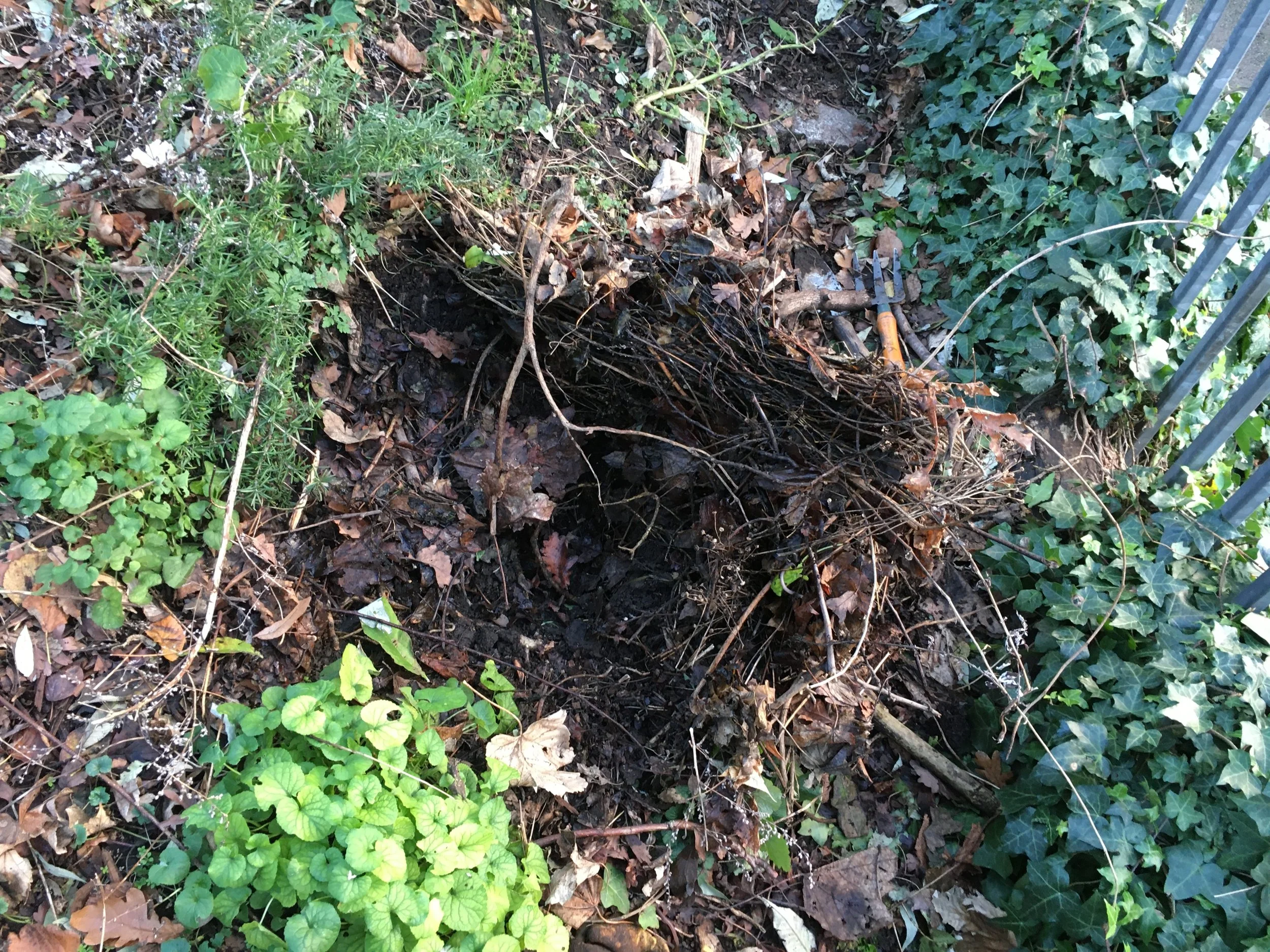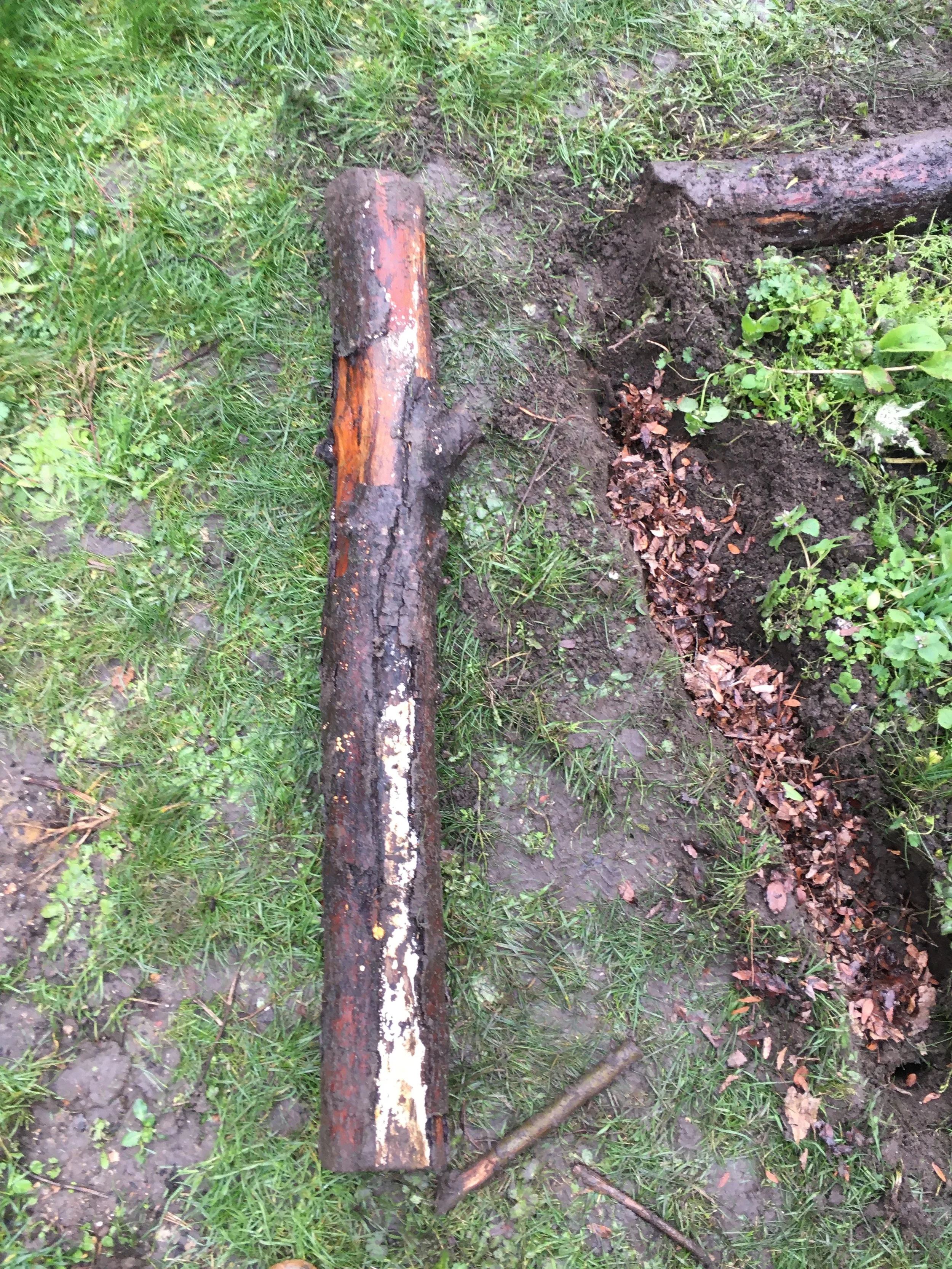









Soil Ecology in a City is a series of ongoing experiments on improving the soil ecology of existing ground in and around East London local sites.
The question of soil ecology started to emerge within my consciousness when I came across the cost associated with disposal of site-won soil whilst working on public landscape projects. Sculpting of site contour at various degrees is part of the design process of any public realm/landscape projects. I learnt that when the ground is sculpted, the soil volume of what comes out of the ground becomes 3 times more. In a reverse equation, this means when existing soil is aerated and released of compaction, the soil volume can potentially grow 3 times more; when combined with a healthy root system of plants, this increase in volume indicates the potential water absorption capacity innate within the existing ground.
Since then, I started to ask the following questions:
“Beyond digging, what are other methods of improving the permeability of existing ground to support a more diverse belowground soil ecology?”
“And what are the social structures around the space, which enable this transformation?”

A long-standing (15 years+) community food growing hub and a garden cared for by Hollybush and Teasdale TRA, residents and volunteers.
The garden includes 30+ food growing raised beds, a plum orchard woodland area. A large lawn area was transformed into a community garden around 2018, initially planted with donated trees and planting.
I have been involved in the project as a volunteer grower/gardener since 2019. The garden ground historically consisted of low nutrient rubble soil and lawn, typical of many council owned green spaces. We have been working together to learn how to de-compact the exisiting soil, improve the soil ecology and to support biodiversity. The garden has been planted with apple trees, UK native underplanting and a dead hedge for composting and habitat. On-going experimentation includes a ground bee nest, tiny rubble stone walls to create micro-climate. We have been implementing the soil ecology/permeability improvements inspired by the soil ecology methods by Hiroomi Takada (a Japanese ecologist and activist)

A project collaboration with Bethnal Green Nature Reserve and Teasdale and Hollybush TRA. A community food growing and ecology garden with ecological features including clay lined biodiversity pond, native mixed hedge rows, sparrow bird boxes and a willow den.
My role involved landscape layout, visualisation and volunteer build.

Community-led co-learning workshop at Bethnal Green Nature Reserve. The nature reserve is originally a WWII bombsite, hence parts of the ground still remain a mixture of rubble and loam soil. The workshop focused on one of the rubble mounds on site, where plants were not growing. The session introduced practical, simple techniques to improve soil health, developed by a Japanese Ecologist, Hiroomi Takada.
Before and After Photos

Observation:
There was little plant growth at the West-facing area of a sloped site.
I tried digging down the area to see what was going on. It turns out that the existing soil was about 10cm.
How shall we improve this situation so more plants can grow in this area?
Implemented methods:
- Placing medium-sized stones to hold back soil along the slope and create a key to add more soil.
- Created a woven blanket with a mixture of dried plant stalks and dried leaf to protect the soil from compaction and provide air-water-decomposing organic matter corridor to foster mycelium growth and root system.
Intended result:
For more plants to grow in this sloped site and to prevent soil erosion.

Observations:
- The base of the cherry tree was bare without much plant growth.
- The area around the cherry tree was being mowed over due to lack of protection.
How shall we improve this situation?
Implemented method:
- Series of shallow trenches with twigs and leaves filled deep holes, topped with unpeeled logs with mycelium growth.
Intended results:
- Decompaction of existing ground.
- Overtime, mycelium will grow through the decomposing organic matter (twigs and leaves) and create a syphon effect for air and water corridor to support a strong root system for the cherry tree.